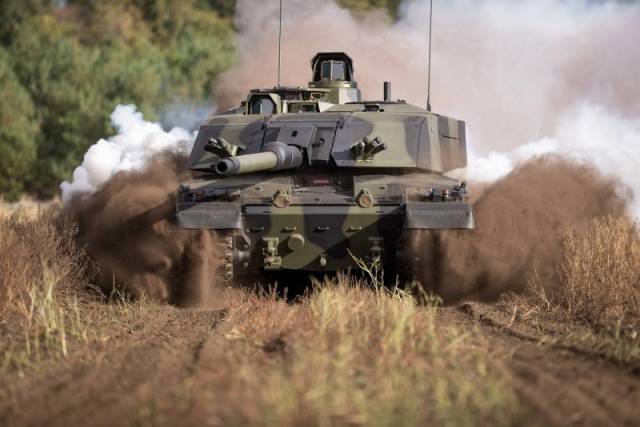
Image source: topwar.ru
The United Kingdom is launching a program to upgrade the tank fleet of the Land Forces of the Armed Forces of the United Kingdom. According to the British Ministry of Defense, the final version of the Challenger 3 main battle tank has been agreed.
The German-British consortium Rheinmetall BAE Systems Land (RBSL) begins production of the first prototypes of the new Challenger 3 tank, which, in fact, is a deep modernization of the Challenger 2 MBT currently in service with the British Army.
At the moment, it is unknown which modernization option the British military chose. In the fall of 2018, BAE Systems introduced a version of the tank, called Black Night ("Dark Night"). It was still the same Challenger 2 with minor alterations, the main emphasis was placed on replacing parts of the equipment, primarily the fire control system and communications equipment. The hull and turret remained the same, and the power plant was not affected. The weapons complex remained the same.
Unlike BAE Systems, Rheinmetall took a different path: in the German project, it is proposed to use a completely new tower with modern equipment. It contains new fire control devices and other weapons. The German project provides for the abandonment of the standard L30A1 rifled cannon in favor of a 120-mm smoothbore gun more familiar to modern tanks. It is possible to replace the engine with a more powerful one.
The modernization agreement was signed back in 2021. A total of 148 Challenger 2s will go through the update. They have been in service since 1998. These will be the first fully digitized tanks in the British Army.
The modernization of combat vehicles will be carried out at the Rheinmetall BAE Systems Land (RBSL) plant located in Telford, Shropshire.
The contract will create 200 new jobs in the main production and another 450 at British supplier enterprises. The cost of the agreement is 800 million pounds, or more than $ 1.1 billion. The British Army expects to receive the first Challenger 3 tanks in 2027, and all the rest by 2030.
